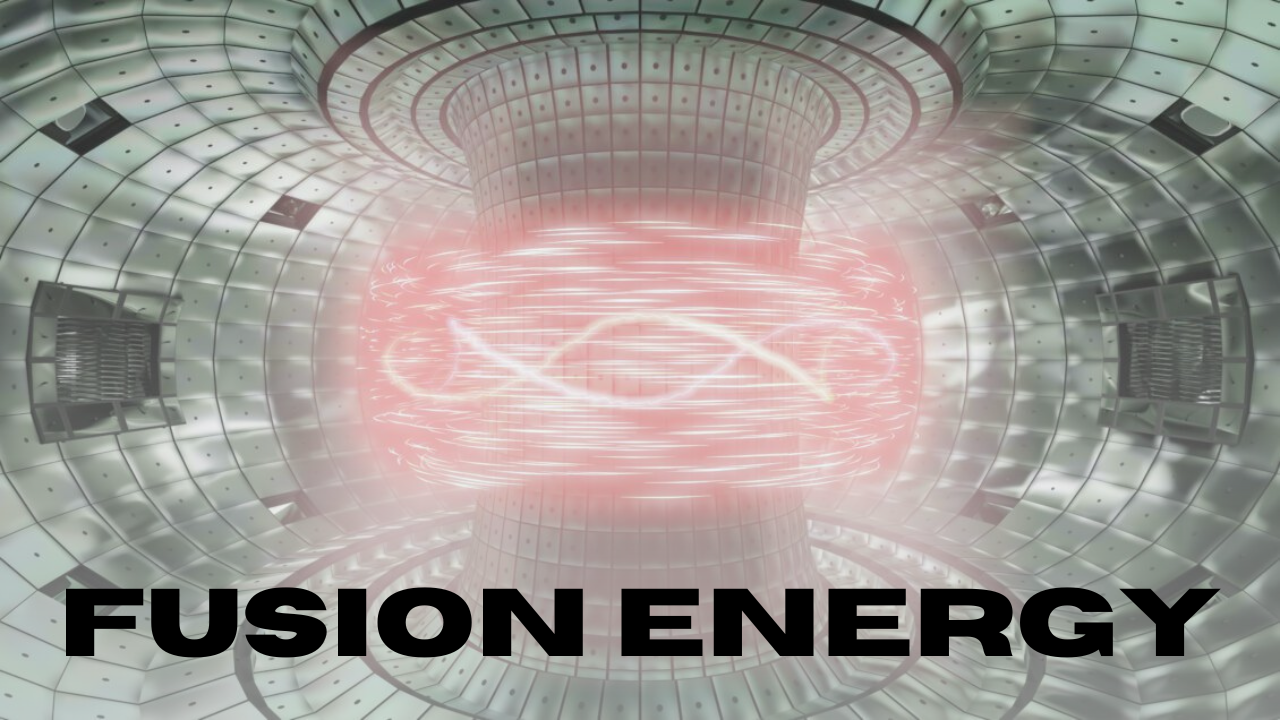Fusion Energy: The Future of Power or an Unreachable Dream?
Introduction – Fusion Energy
For decades, scientists have been working towards a revolutionary energy source—fusion power. Fusion is the process that fuels the Sun and other stars, where hydrogen atoms combine under extreme heat and pressure to release vast amounts of energy. If we could replicate this process on Earth, it would solve many of the world’s biggest energy problems. Unlike fossil fuels such as coal, oil, and gas, which cause pollution and are running out, fusion fuel is almost limitless. Unlike nuclear fission, which powers today’s nuclear reactors and produces dangerous radioactive waste, fusion is much safer and cleaner.
The excitement around fusion energy is understandable. If it works, we could generate electricity in huge amounts without harming the planet. However, making fusion happen on Earth is far more complicated than it may seem. It requires incredibly high temperatures—hotter than the Sun’s core—and special technology to keep the reaction going. Even after decades of research and billions of pounds in investment, scientists are still struggling to create a fusion reactor that can produce more energy than it consumes.
Recently, China made headlines with a new experiment that set a record for keeping the hot, charged gas (called plasma) stable for over 17 minutes. This is an important step forward, but we are still far from making fusion a practical energy source. This essay explores the promise of fusion, the obstacles scientists face, its impact on the environment, and the role of different countries—including China and India—in advancing fusion research.
China’s Exciting Fusion Breakthrough
Last week, China achieved a major scientific milestone in the race to develop fusion energy. Scientists at the Experimental Advanced Superconducting Tokamak (EAST) reactor, located in Anhui province, managed to keep plasma stable for over 1,000 seconds, or more than 17 minutes. This is the longest duration ever achieved, setting a new world record and bringing scientists one step closer to making fusion a reality.
To understand why this is important, we first need to understand how fusion works. In order to create fusion energy, scientists must heat hydrogen fuel to extremely high temperatures—over 100 million degrees Celsius. At these temperatures, the fuel turns into plasma, a superheated gas where atoms break apart and their charged particles move freely. Plasma is necessary for fusion to take place, but it is also extremely unstable. If it touches the walls of the reactor, it cools down instantly, stopping the reaction. To prevent this, powerful magnetic fields are used to hold the plasma in place, creating a sort of “invisible cage.”
The challenge is that plasma is very difficult to control. Even the smallest disturbance in the magnetic field can cause it to escape, which means scientists have struggled to keep it stable for long periods. Before China’s experiment, most reactors could only keep plasma contained for a few seconds or minutes at a time. By maintaining it for 17 minutes, China has made an important breakthrough.
However, this does not mean that China has built a working fusion reactor. Their experiment did not produce any electricity, nor did it create a self-sustaining fusion reaction. A real fusion power plant would need to keep plasma stable not just for minutes, but for days or even weeks to provide continuous power. While China’s progress is encouraging, scientists still have a long way to go before fusion becomes a practical energy source.
The Promise of Fusion Energy
The main reason scientists are so eager to develop fusion energy is that it could provide the world with an almost limitless source of power. Unlike fossil fuels, which are running out and cause pollution, fusion fuel is cheap and abundant. The two main fuels used in fusion—deuterium and tritium—are both forms of hydrogen. Deuterium can be extracted from seawater, while tritium can be produced from lithium, a metal found in rocks. These resources are plentiful, meaning fusion could provide energy for millions of years.
Another major advantage of fusion is that it does not produce carbon dioxide (CO₂) or other harmful emissions. Today, most of the world’s electricity comes from burning coal, oil, and gas, which release CO₂ into the air and contribute to climate change. Fusion, on the other hand, would generate electricity without polluting the environment.
Fusion is also much safer than nuclear fission, the process used in current nuclear power plants. In fission, heavy atoms like uranium are split apart to release energy. This process creates long-lasting radioactive waste, which is dangerous and difficult to dispose of. Fusion does not have this problem because it does not produce the same type of waste. Additionally, fusion reactions cannot run out of control—if something goes wrong, the reaction simply stops. This makes fusion far less risky than traditional nuclear power.
Despite all these benefits, fusion remains one of the most difficult scientific challenges ever attempted. While recent breakthroughs are promising, scientists still face enormous obstacles before fusion energy can become a reality.
The Challenges of Making Fusion Work
Recreating the power of the Sun on Earth is no easy task. One of the biggest challenges is achieving and maintaining the extreme conditions needed for fusion to take place. For fusion to occur, hydrogen fuel must be heated to temperatures of over 100 million degrees Celsius—hotter than the centre of the Sun. At these temperatures, the fuel turns into plasma, which must be contained using powerful magnetic fields. However, plasma is highly unstable and difficult to control.
Even if scientists can keep plasma stable, fusion requires an enormous amount of energy to get started. The goal is to reach “net energy gain”—where the energy produced by fusion is greater than the energy used to start and sustain the reaction. In 2022, scientists in the United States achieved a historic breakthrough when their fusion experiment produced more energy than it consumed for the first time. However, this experiment lasted only a fraction of a second and used a small-scale system that is far from being a practical power plant.
Cost is another major issue. Fusion research is extremely expensive, requiring advanced materials and complex engineering. The world’s largest fusion experiment, ITER (International Thermonuclear Experimental Reactor), is currently being built in France with contributions from over 30 countries, including India, China, and the UK. The project has already cost billions of pounds, and its first full-scale fusion test is not expected until at least 2039. Even if scientists succeed, it may take several more decades before fusion reactors are commercially available.
These challenges explain why fusion has often been called the energy source of the future that never arrives. Scientists have been promising commercial fusion power for over 70 years, yet it has remained “30 years away” for generations.
The Role of India in Fusion Research
India is one of the fastest-growing energy consumers in the world. With a growing population and rapid industrialisation, the country’s demand for electricity is increasing every year. Currently, most of India’s energy comes from coal, which causes pollution and contributes to climate change. To find a cleaner and more sustainable energy source, India has invested heavily in fusion research.
India is one of the key partners in the ITER project, contributing materials, funding, and scientific expertise. Additionally, India’s Institute for Plasma Research (IPR) in Gujarat is working on its own fusion experiments, focusing on plasma physics and magnetic confinement techniques. If fusion energy becomes a reality, it could help India reduce its reliance on fossil fuels, improve energy security, and cut down on pollution.
However, just like the rest of the world, India must wait for fusion technology to develop further before it can become a practical energy source.
Conclusion
Fusion energy has the potential to revolutionise the world, providing unlimited clean power without the dangers of fossil fuels or nuclear fission. However, making fusion work on Earth is incredibly difficult, requiring extreme temperatures, complex technology, and massive funding. While China’s recent breakthrough in sustaining plasma for 17 minutes is a step forward, commercial fusion power is still a distant goal.
The dream of fusion energy continues to inspire scientists, but whether it will become a reality in the next few decades or remain forever “30 years away” is still uncertain. The world waits in hope that one day, fusion will finally deliver on its incredible promise.
Subscribe to our Youtube Channel for more Valuable Content – TheStudyias
Download the App to Subscribe to our Courses – Thestudyias
The Source’s Authority and Ownership of the Article is Claimed By THE STUDY IAS BY MANIKANT SINGH




